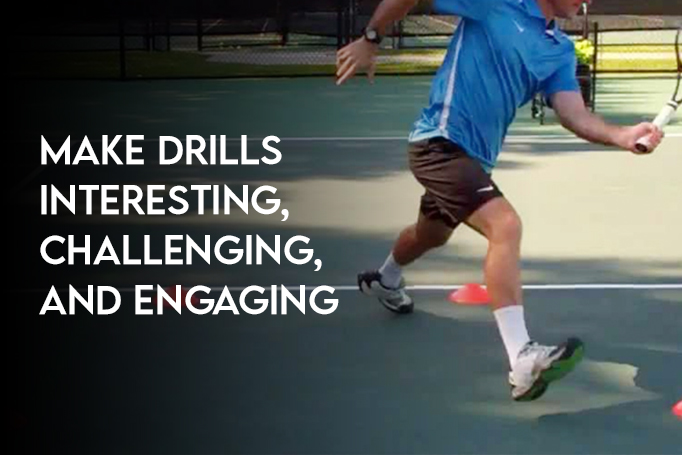Going ahead with box drills and feeding drills that were shared in the last newsletter, let me just share a few ideas regarding spicing up the drills and being creative with it. This will help in learning better swings and movements across the court. It motivates the player and helps in bettering their skills which you will see as you read on.
These pointers and tips will apply for live drills and also for the point oriented drills too, with minor tweaks!
1. Define the purpose of the drill
To me, this is very vital that the coach and the player should be very clear about the purpose of the drill. It could be working on forehand depth, a backhand technical correction, aiming a particular shot or a serve to just this particular spot or a target area. But please define what is being worked upon and it has to be communicated very clearly to the player/players.
If this is done, the player/players start forming a picture in their head regarding what they want to achieve and this to me is very crucial in bringing out the best from a player.
At Shaishya, we don’t let the players just hit or just warm-up on the court. There has to be a purpose and with the mature players, they sometimes define the purpose of the drill or what they want to work on.
2. Use targets:
I absolutely hate it when I see a feeding drill that is being done without any target or target area on court. Give the players a goal, a (target) and see how their engagement levels and motivation levels automatically shoot up. This also develops a mental skill. Because while hitting a shot the player should have a target or target area in mind as to where they want to hit the shot. It cannot be an aimless shot. In the middle of the match, they don't play an aimless shot and hence it should not be an aimless shot in a practice session! Use targets even while doing technical corrections.
3. Define the deadline:
When does the drill end? With these mindless feeding drills that most of us end up doing in our sessions, normally the drill ends when the number of balls in the basket or bucket are over. This is not very interesting if I am a player.
When I am on the receiving end of these drills I want to achieve something from this basket of balls. So for example, if I have a target area on the court, the coach can communicate that this drill will end once the player hits 10 balls into the target area or when the player hits two of the cones placed on the court.
Even having a deadline like we are going to hit/practice this skill by hitting 50 balls is good. It's always good to define the end line.
4. Make it competitive:
Introduce an element of win/loss. If you have more than two players playing, you can make it a competition. So that could be two teams competing with each other whether it is which team hits the most targets, or which team hits the balls behind the service line, or whether it is consistency who gets the most balls in. When there is a competition between two teams this really gets the player’s competitive juices flowing. The players really get into it. So, you are now developing team spirit also in your players in this otherwise individual game.
If you have only one player on court, you can make it a win or loss with the coach. For example, if the kid/player is able to fulfill a particular task within a particular number of balls or within a particular time-frame, he/she wins and if they are not, then the coach wins. This way you can keep the pressure on and develop these mental skills even in the most basic of drills.
5. Introduce Scoring:
At our academy, Shaishya in Ahmedabad, we have introduced all academy challenges. So what we do is take a very basic drill, say maximum serves in by a player and we then keep a record of the maximum serves in for all the players.
Now, this is branched out as competition in a batch and now when we actually do it across batches for all the players of the academy, it becomes an academy wide challenge.
Another example is out of 20 how many drop-shots or overheads are you able to get in, so that can become a challenge.
Noting it and then comparing it with different players of the same batch and different batches produces the best performers and they can be suitably rewarded.
So above are just some of the pointers that we can use as coaches and even as players working on our game to spice up our practice, our drills, make them more engaging, competitive and purposeful.













Comments
Keep posting